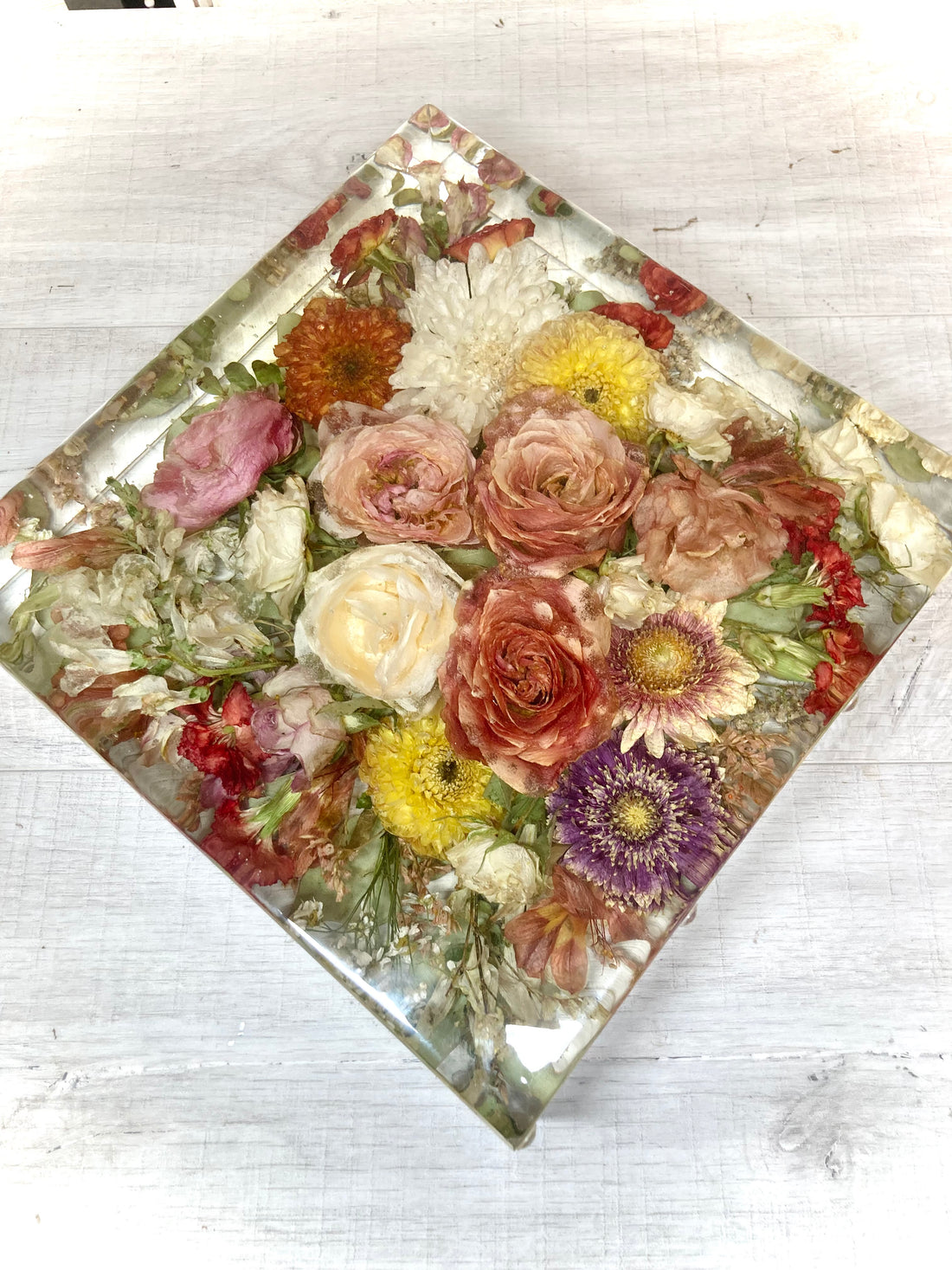Introduction: Your wedding day is a beautiful milestone filled with memories and cherished moments. Among the many elements that make your wedding special, the bouquet holds a special place. It's a symbol of love, beauty, and celebration. While flowers eventually wilt and fade, there is a wonderful way to preserve your wedding bouquet for years to come – resin display blocks. In this blog post, we will explore the art of preserving wedding bouquets using resin and how it can serve as a lasting memento of your special day.
-
The Beauty of Resin Display Blocks: Resin display blocks offer a unique and elegant way to preserve your wedding bouquet. Resin is a versatile material that, when properly cured, becomes hard and durable, encapsulating the flowers in a transparent block. This preservation method allows you to showcase the bouquet's beauty while protecting it from decay and maintaining its original shape and color.
-
Choosing the Right Bouquet for Resin Preservation: When selecting a bouquet for resin preservation, it's essential to consider the flowers' size, shape, and color. Choose flowers that are in excellent condition, as the resin will magnify any imperfections. Blooms with sturdy petals and a good amount of structure tend to preserve well in resin.
-
Preparing the Bouquet for Resin: Before starting the preservation process, it's crucial to prepare the bouquet properly. Trim any excess foliage or stems, as they can cause air bubbles in the resin. Remove any loose petals or delicate flowers that may not withstand the resin casting process. It's a good idea to consult with a professional preservationist or florist who specializes in resin preservation to ensure the best results.
-
The Resin Casting Process: The resin casting process involves pouring liquid resin into a mold, then carefully arranging the flowers within it. Follow these basic steps to preserve your wedding bouquet in resin:
a. Choose a mold: Select a mold that suits your desired shape and size for the resin display block. Common options include square or rectangular molds, but you can also find circular or custom-shaped molds.
b. Prepare the resin: Mix the resin according to the manufacturer's instructions. Some resins require a two-part mixture, while others come pre-mixed. Be sure to work in a well-ventilated area and wear appropriate protective gear.
c. Pour the resin: Pour a thin layer of resin into the mold, ensuring it covers the bottom evenly. Allow it to set partially but not completely.
d. Arrange the flowers: Gently place your prepared bouquet on the partially set resin layer. Adjust the flowers as desired, taking care not to press them too deeply into the resin.
e. Complete the casting: Pour the remaining resin over the flowers, ensuring they are fully covered. Use a toothpick or a stirring stick to remove any air bubbles trapped within the resin.
f. Cure and harden: Allow the resin to cure and harden completely. Follow the manufacturer's instructions for curing time, which typically ranges from 24 to 72 hours. Avoid moving or disturbing the resin during this period.
-
Displaying and Preserving the Resin Block: Once the resin has fully cured, you can remove it from the mold and prepare it for display. Here are some tips for preserving and showcasing your resin block:
a. Cleaning: Gently clean the surface of the resin block using a soft cloth and mild soap. Avoid using harsh chemicals or abrasive materials that could damage the resin or flowers.
b. Protecting from sunlight: Display your resin block away from direct sunlight, as UV rays can cause fading and discoloration over time. Consider placing it in a glass display case or on a shelf away from


